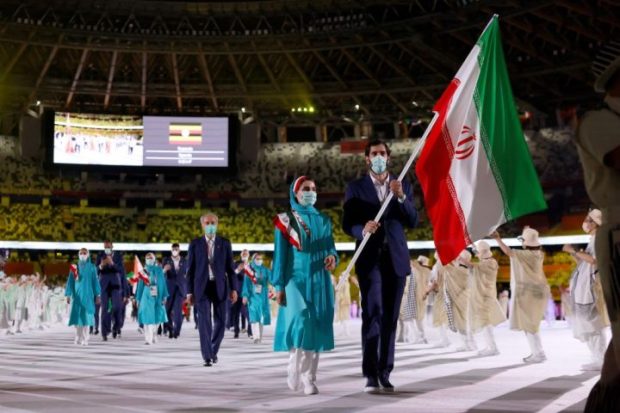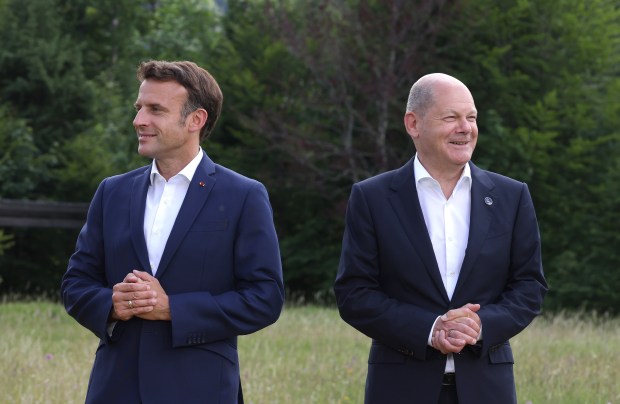What should one make of Shamima Begum’s appearance on Good Morning Britain? The London schoolgirl left the UK in 2015 to join Isis in Syria, but it appears she’s converted to common sense in recent times. Dressed in a sleeveless top and a baseball cap, Begum made a number of frank admissions, including how she ‘felt very constricted in the hijab. I felt like I was not myself.’
The cynic will suggest it is an act in an attempt to be allowed back to Britain. Perhaps. Or maybe we should give Begum the benefit of the doubt. She was young and naive at the time. Now she understands how an enforced dress code demeans women – a reality that woman in Afghanistan are now living through.
It takes a brave woman who is willing to speak out against the Taliban’s demands that female students wear hijabs. But some Afghans are willing to do just that: ‘Black attire, burqa, and niqab are not and (have) never been part of the Afghan culture,’ one woman was quoted as saying. In speaking out, these women bring shame on those in the west who are silent on this issue.
Other Afghans have begun an online campaign against the repressive dress code, sharing photos of themselves wearing colourful traditional dresses. These heroic young women are reminiscent of those in Iran three years ago, who took to the street to protest against the compulsory wearing of hijabs; or the Algerian women who, in 2017, launched ‘Operation Swimsuit’, a campaign to allow them to wear a swimsuit on the beach without being verbally and physically assaulted by men.
These courageous campaigners received little or no support from young western feminists. Yet when French coastal resorts, including Nice – which had just seen 86 people murdered in an Islamist attack – banned the burkini, the reaction was swift.
Former French president Nicolas Sarkozy warned that:
‘Wearing a burkini is a political act, it’s militant, a provocation. If we do not put an end to this, there is a risk that in ten years, young Muslim girls who do not want to wear the veil or burkini will be stigmatised and peer-pressured.’
Many newspaper columnists in Britain and the United States disagreed, as did the dozens of protesters who gathered outside the French embassy in London. Some of them held placards with slogans such as ‘Islamophobia is not freedom’. One of the protest organisers, India Thorogood, told reporters she was there to show ‘solidarity with Muslim women in France…it is never right to tell a woman what she can wear or to take her clothes off.’ Will these demonstrators now protest on behalf of Afghans living in fear of the Taliban’s new rules?
Last month, the Guardian published a harrowing article from an anonymous female student in Kabul. ‘I can no longer wear my favourite yellow dress or pink lipstick,’ she wrote, terrified of what the future might hold. ‘That after 20 years of fighting for our rights and freedom, we should be hunting for burqas and hiding our identity.’ It was a powerful piece. But does it square with an article the paper published in 2012, which lauded the hijab as ‘feminist and empowering’?
A year later, the Observer published a lengthy article headlined ‘Can the burqa be stylish?’. Yes, was the answer. ‘To some it’s an object of oppression, to others a graceful and modest form of expression,’ said the paper, which then proudly showcased ‘the women determined to make Islamic dress both a statement of choice – and fashion’.
In 2018, the Independent gave a voice to a Danish women who was outraged that her country had banned the face veil, which had left her feeling ‘dehumanised’. ‘I feel sad that my way of life is being suppressed by the politicians who want to force me to uncover,’ she said.
Who will speak out for those in Afghanistan forced to cover up? When France implemented a ban on headscarves and other religious symbols from schools in 2004, Human Rights Watch called it ‘discriminatory’ and claimed it ‘disproportionately affected Muslim girls’. In fact, a ban had been introduced ten years earlier, but its enforcement was lax and the government only enshrined it into law in 2004.
Has the ban had a positive effect? A book published last month in France, Three Lessons about the Republican School, suggested it might have done. Among Muslim women born in France before 1970 – prior to the enforcement of the law – only one in two achieved their baccalauréat (compared to 62 per cent of non-Muslim girls); subsequently, among young Muslim women born after 1990 – and who therefore went to school after the ban on wearing the veil – this success rate has risen to 68 per cent.
Did the ban help these pupils? Whether it did or not, what is clear is that the burkini is not part of French culture, just as those brave Afghan women are right to protest that the burqa and niqab are not part of their culture. They belong to no culture other than the one that seeks to keep women in servitude. If even Shamima Begum realises that, will others in the west do the same?
<//>
Got something to add? Join the discussion and comment below.
Get 10 issues for just $10
Subscribe to The Spectator Australia today for the next 10 magazine issues, plus full online access, for just $10.





















Comments
Don't miss out
Join the conversation with other Spectator Australia readers. Subscribe to leave a comment.
SUBSCRIBEAlready a subscriber? Log in